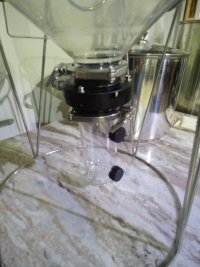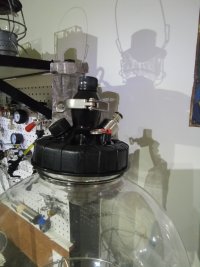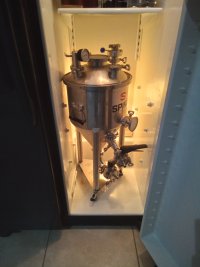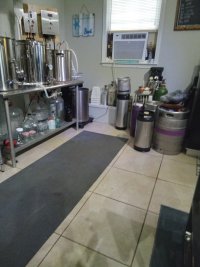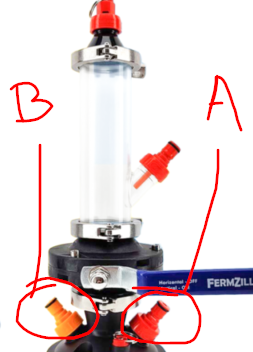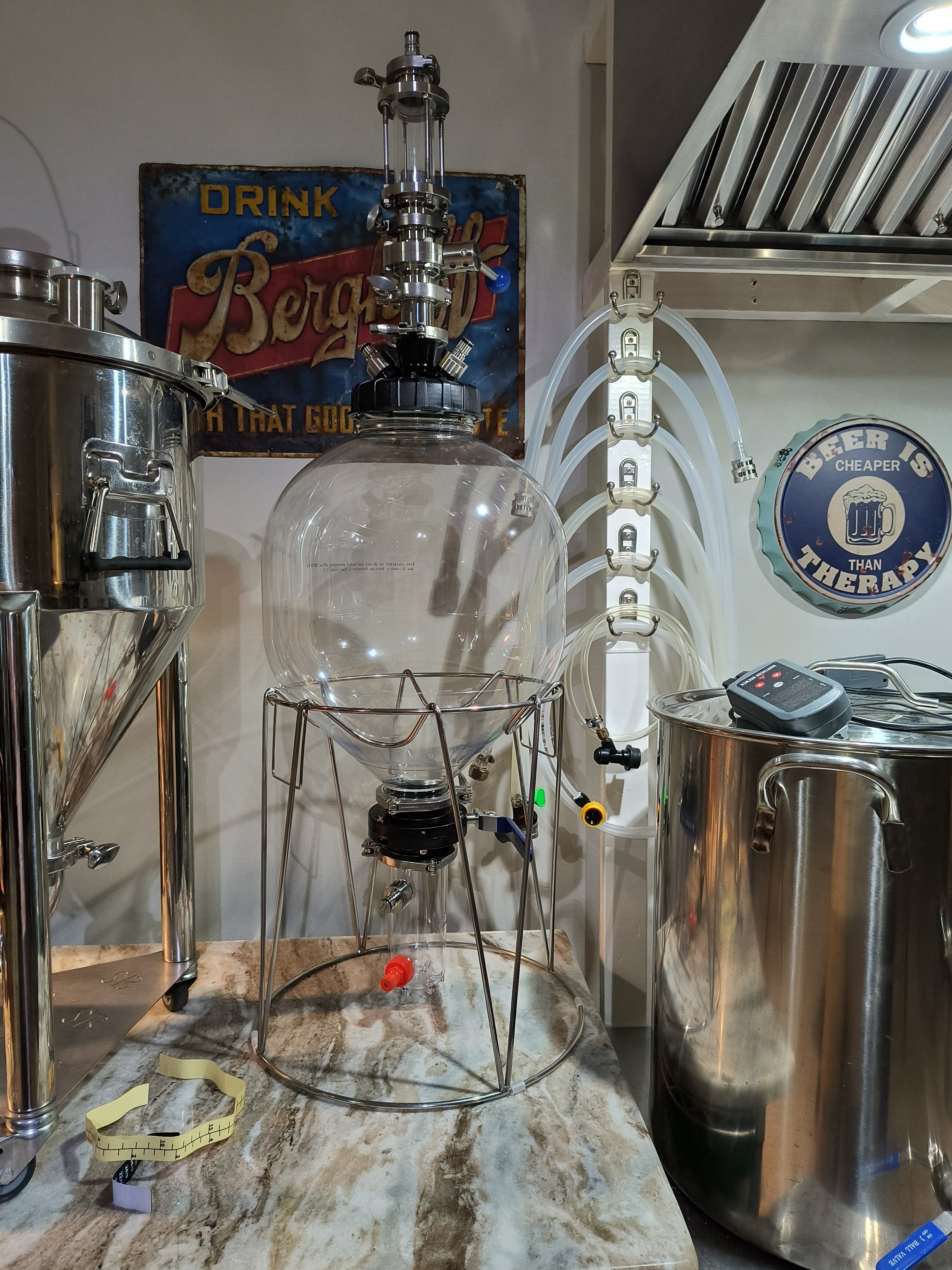Just transferred the first batch out of my new Fermzilla All-Rounder. I've been doing pressure transfers in my Fermonsters for a bit, so thought I knew what I was doing. Nope. Forgot to open the spunding valve on the Fermzilla after the beer started flowing, and when it stopped I was confunded as to why. Figured that out, then realized that I hadn't loosened the straps holding it to the stand so I could tip it. Was awkward to get at with the lines in the way but got that done. This batch was an IPA with a hefty dry-hop, which I did with a bag attached to the side with magnets; with about 2g left to go, the filter got stuck under the bag and started pushing straight co2 into the keg. Took a few minutes but figured out a quick fix; released the pressure, then removed the post that had the floating dip tube attached. A few tugs and the filter/float got unstuck, added more co2 and transfer continued. Fairly full keg, happy. Then came the REALLY fun part; getting that lid off for cleaning. It does NOT like to come off. Not thinking, I used a screwdriver in one of the post openings; CRACK! Oops. More google. Ok, add co2 with the ring on loose until it starts to pop off. Stop reading right there...before the part that says release the pressure before trying to get the lid off. 5psi is plenty of pressure to send that lid flying, if my face had been any closer I would have had some splaining to do at the BBQ tomorrow with a lovely black eye, or other bruise on my countenance. New lid will be here next week.
Other than that, I'm happy with it. Beer came out partially carbonated; a few pulls of the PRV at 30psi will see it right. And the beer itself is quite tasty, lots of aroma and flavor from the Mosaic hops I used. I've been plagued with acetaldehyde in the last few beers I fermented in the fermonsters; it did go away (one of them needed krausening to get rid of it) but having one come out with absolutely NONE is well worth the price I paid for this thing. Easy to clean, doesn't take up any more space than my fermonsters, just a nice fermenter.
Anyone else have any comments/advice/horror stories with Fermzillas?
Other than that, I'm happy with it. Beer came out partially carbonated; a few pulls of the PRV at 30psi will see it right. And the beer itself is quite tasty, lots of aroma and flavor from the Mosaic hops I used. I've been plagued with acetaldehyde in the last few beers I fermented in the fermonsters; it did go away (one of them needed krausening to get rid of it) but having one come out with absolutely NONE is well worth the price I paid for this thing. Easy to clean, doesn't take up any more space than my fermonsters, just a nice fermenter.
Anyone else have any comments/advice/horror stories with Fermzillas?



